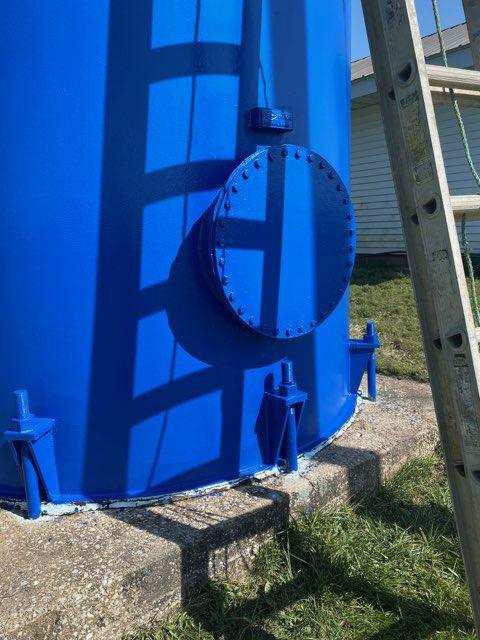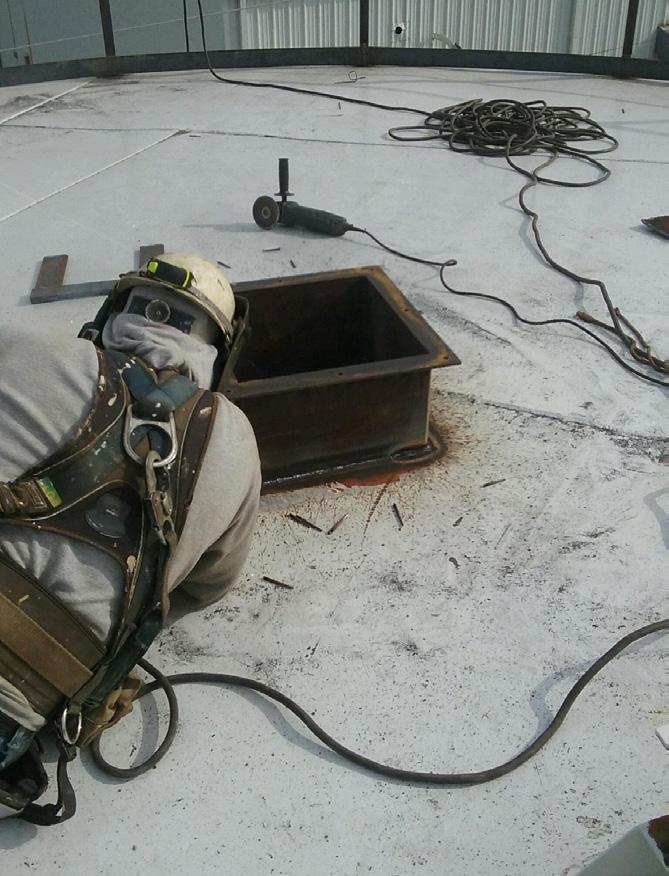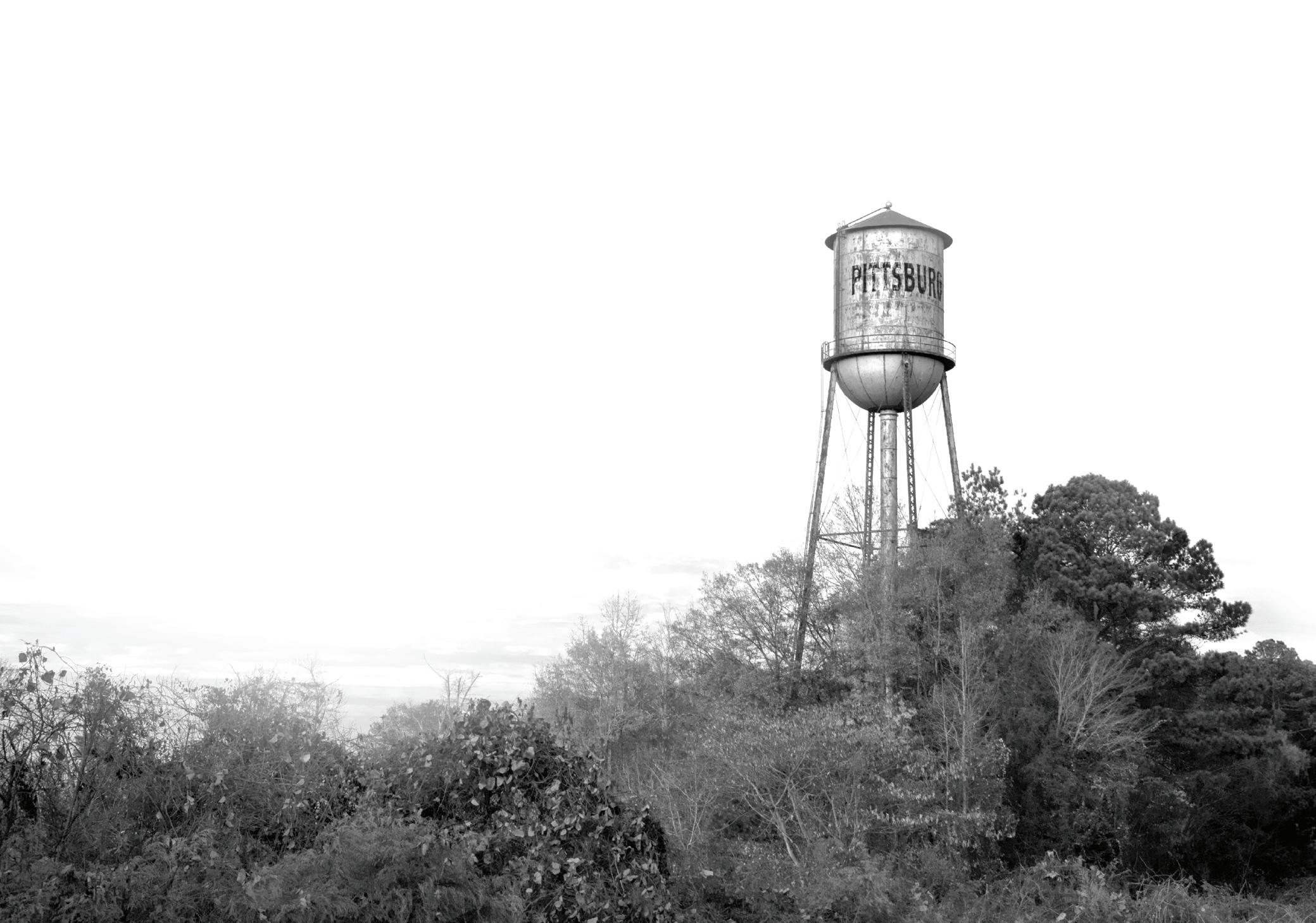
5 minute read
Assuring Safe Entry and Access to a water storage Tank
By Erin Schmitt, Media Director/Technical Writer, Pittsburg Tank & Tower Group
An old, riveted tank — often referred to as a “tinman” because of its resemblance to the famous “The Wizard of Oz” character — was badly in need of a paint job. Tinmen are elevated tanks, which carry more risks compared to ground tanks since there’s a greater fall risk. It also means that any entry or exit points into the tank are much further from the ground. This tank, located in California, only had one entry or exit point — a roof hatch.
To safely complete a paint job or any maintenance or repair work that requires entering the tank, there should always be at least two ways of ingress and egress. So, to finish the tank job, the contracted company installed an OSHA-compliant manway on the tank’s shell. The manway became the entry and exit for both the paint crew and their equipment, while they used the roof hatch mainly for necessary ventilation.
It’s crucial to have large enough access points, a rescue plan in place, rescue supplies at hand, and for people responding to have undergone training for an unplanned water storage tank rescue. Manways and hatches are access points for inspections, repairs and maintenance. Rescuers must have easy access through manways or hatches so they can extract the person within a reasonable amount of time and prevent further injury if someone has had a medical emergency while inside the tank.
Accidents require investigations-and inspectors cite code violations in their official reports. The tank owner or operator could then potentially be held liable for federal and state fines or be on the line for damages if there’s a successful civil suit filed. Routine inspections from a state fire marshal on fire protection tanks could also yield fines for the tank owner if their tank is not up to code. It’s better to make sure a tank is up to code before an accident happens versus waiting until after the fact.
Two shell manways must be provided within the first ring of a tank shell, according to American Water Works Association Standard 7.4.4. One manway must be at least 30” in diameter and circular. The other manway has to be at least 24” if it’s circular or 18” x 22” if its elliptical. If the access cover weighs more than 50 pounds, it should have a hinge or davit arm.
Manways should be located 180 degrees from each other. In a medical emergency, time is critical. For example, if someone suffers a heart attack, rescuers will want to lift the person through the closest access point. Being able to rescue a person quickly could make the difference between life and death. If there’s only one access point, and, especially, if the one access point is blocked by equipment, it could waste precious time.
Painting requires blast hoses, paint sprayers and often a fan to filter the air and keep the fumes down. All of this equipment must fit inside the tank so it can be repainted. If a tank is being sandblasted, a dust sock may

be used at the manway to catch any sandblast debris. Hoses, fans, ventilators and socks block or at least impede entry or exit, making it necessary that another access point be available.
Some companies won’t accept work unless there are certain safety measures in place on a storage tank. It’s not worth the risk of having their employees paint or repair a tank without a viable exit.
Ground storage tanks are less hazardous to enter and exit because the manways are closer to ground level. For elevated storage tanks, any rescue attempts would require the rescuer to access the elevated structure before entering the tank.
There should be two openings on a tank roof. Ideally, that would be two hatches, both at least 24” wide; however, one can be a vent if the vent is removable and provides a large enough opening.

An interior ladder is helpful to gain safe access if any work is performed inside the tank. That includes maintenance, repairs or a routine inspection that’s not utilizing a robot. OSHA-compliant ladders must have standoffs every 10’ on center and cable type ladder safety devices. A cable slide is connected to the cable and the slide is hooked onto a climber’s harness. Ladder guards prevent intruders from easily accessing the tank. Round ladder rungs don’t offer an edge or grip of any kind, but anti-skid rungs do. They must also be at least 16” wide and should have antiskid rungs to prevent slips and trips. Steel that interacts with water without a protective barrier — think a tank liner for a storage tank — starts to rust and corrode over time. If the rusting isn’t addressed, the ladder may deteriorate and become unsafe to climb. The ladder may become disconnected from its standoff, which is what connects the ladder to the tank shell. If that happens, it could damage the interior paint or even puncture a hole in the tank. In colder climates, there’s also the potential for a tank to freeze, causing the water to expand, - creating so much pressure that appurtenances can break off and damage the tank. These factors must be weighed when deciding whether to place a ladder inside a tank. As with anything, a little maintenance can go a long way.
Of course, there are tanks still in operation built before current standards were adopted. But, for safety reasons, the tanks should be upgraded to comply with modern standards as repair work is done.

Code Updates
In-Service Cleaning
If you are interested in having us as your partner, feel free to contact one of our department representatives below
NEW TANKS — Rick DiZinno (270) 826-9000 ext. 2601 EXISTING TANKS — Jordan Pyles (270) 826-9000 ext. 4601





